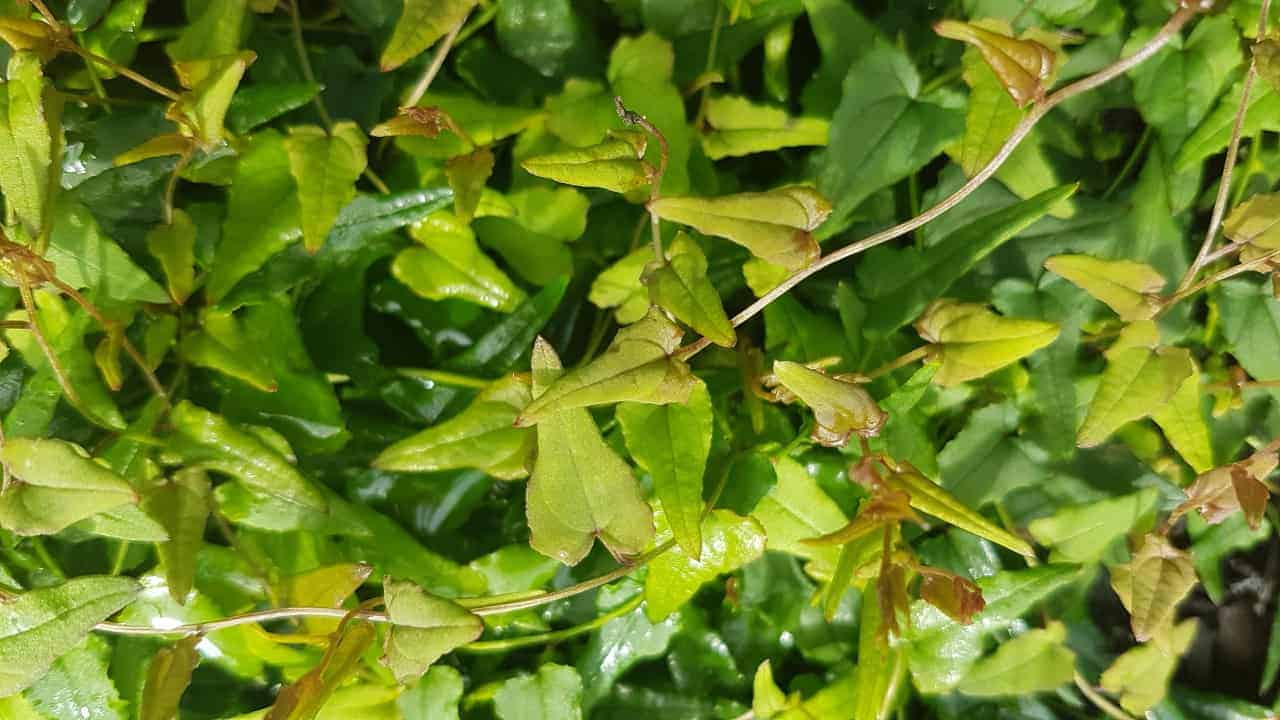Warrine
Dioscorea hastifolia
Warrine tubers are long, thin and white. They can be eaten raw, but taste much better lightly roasted with butter or a pinch of salt. This native vegetable is a great ingredient in a variety of savoury and sweet dishes, like stews, pies, curries, tarts, dumplings and cakes.
Yellow flowers bloom in Makuru (May–July), producing triangular fruits that mature in Kambarang (October). Harvest Warrine by digging up the tubers in late Winter, just after the flowers turn to fruit. Like sweet potatoes, sections of tubers can be used to grow more plants — with careful timing, you can grow up to three crops each year.
Warrine is a scrambling small vine that can tolerate both drought and sandy soil, but for best results, grow it in a loamy medium and keep mulched. To maintain a tidy appearance in the garden, provide your Warrine with a stake, trellis or frame — its long climbing stems can reach up to 2m in length. Warrine’s botanical name, hastifolia, means “spear leaf”, which perfectly describing its slender foliage. Warrine goes completely dormant in Birak and Bunuru (Summer) so make sure you keep the label to mark the spot where it’s planted.
This species is suitable for both garden beds and large pots with plenty of root space. Use it to fill gaps, dress up rockeries, or as covering for low walls and fences.
Aboriginal name(s):
- Warrine (Noongar)
How can I grow big Warrine tubers?
Looser soil (light and non-compacted) an adequate watering can result in larger tubers.
How do I propagate my Warrine for next year’s crop?
Similar to propagating potatoes and sweet potatoes, you can divide your Warrine tuber into smaller sections, and leave them in water to sprout.
Will Warrine grow throughout the year?
No, Warrine goes dormant during Summer (Birak and Bunuru in WA), with the foliage dying away completely.

Suitable for full-sun

Suitable for part-shade

Suitable for full-shade

Suitable for pots

Dimensions:
Height 0.4-1.5m
Width 0.4m

Tolerates drought

Tolerates sandy soils

Attracts bees & insects

Suitable for gaps

